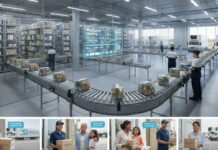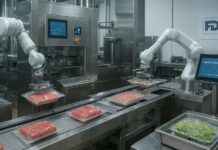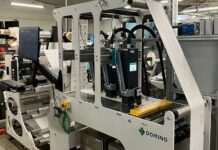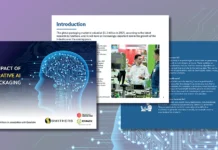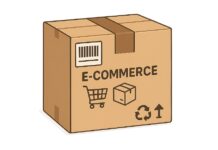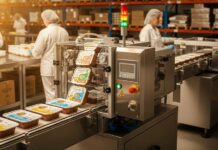How Predictive Analytics Will Change the Future of Important Deliveries
In the ever-changing world of logistics and supply chain management, companies who are responsible for getting important commodities to their destinations on time have never had more to lose. Hospitals, factories, emergency responders, and even leaders in e-commerce all depend on complex distribution networks to get the goods they need to do their jobs. Predictive analytics is changing the way these networks function as these businesses deal with more demands, unexpected disruptions, and very small profit margins. The issue isn’t whether predictive analytics will impact the future of important deliveries but how much it already has.
A Change in the Way Important Deliveries Are Made
Industry leaders have always been able to predict, change, and improve distribution networks. In the past, companies used historical data, best-guess forecasts, and reactive techniques to handle deliveries. But as global supply chains become more complicated and people demand things to be faster and more reliable, these traditional models have shown their flaws. Predictive analytics is a combination of sophisticated tools and methods that use big data, artificial intelligence (AI), and machine learning (ML) to not only comprehend the past but also predict the future.
At its foundation, predictive analytics uses huge amounts of real-time data from sensors, GPS trackers, weather reports, traffic systems, and transaction records. Then, advanced algorithms look for trends, find hazards, and most crucially, anticipate what will happen in the future with them. This foresight is very useful for important deliveries when a late shipment might cause the death of a person or the stopping of a manufacturing line.
Unprecedented accuracy and lowering of risk
The effects of predictive analytics are most apparent in the area of risk reduction. DHL said that organisations who use predictive analytics in their supply networks have had 40% fewer unexpected delivery delays. These algorithms can predict problems—like bad weather or political unrest—long before they happen by looking at data from tens of thousands of shipments. This lets businesses change delivery routes ahead of time, find new suppliers, and talk openly with consumers.
For instance, top healthcare logistics companies now utilise predictive analytics to make sure that temperature-sensitive vaccines and medicines are always delivered safely. These systems can anticipate the danger of a cold chain breach with up to 95% accuracy by constantly modelling temperature, humidity, and handling data. If a deviation is about to happen, rerouting or emergency intervention may be initiated to protect the integrity of important medications and, in the end, the safety of the patient.
Making things more efficient and lowering costs
Another thing that predictive analytics does well in important deliveries is help things run more smoothly. Companies may use complex route optimisation algorithms to look at things like traffic conditions, vehicle health, driver behaviour, and outside factors in real time. According to a study by McKinsey, companies that use advanced analytics in their supply chain functions can reduce inventory levels by 20-50%, improve supply chain efficiency by 10-15%.
Think about a huge online store getting hundreds of requests for same-day delivery. Predictive algorithms can group deliveries by location, find the best routes for drivers in real time, and change assignments on the fly if a vehicle breaks down or there is a traffic bottleneck. This flexibility makes sure that packages arrive on schedule while making the most of the fleet and keeping expenses low.
Increasing openness and customer happiness
It’s not only about speed and dependability for important deliveries in the future; it’s also about being open. With predictive analytics, businesses may provide consumers real-time ETAs and information about possible delays before they happen. For example, UPS has spent a lot of money on predictive systems that keep track of every shipment as it moves through its worldwide network. Because of this, consumers have exact delivery windows and can plan ahead, which is particularly important in industries where time is everything.
Also, predictive analytics goes beyond only the delivery. Organisations may keep improving their processes by looking at comments from customers after delivery, sensor data, and incident reports. They learn from both their successes and their failures. This feedback loop generates a culture of always becoming better, which keeps service standards rising.
Reaching goals for sustainability and compliance
For companies that make major deliveries, particularly in sensitive fields like healthcare and pharmaceuticals, meeting regulatory requirements and sustainability goals is becoming more and more vital. Companies are using predictive analytics to not just control risk but also follow the many rules that come with moving dangerous or sensitive items. Companies may make sure that shipments satisfy all legal and safety criteria by automating compliance checks and keeping full audit trails.
Another area where predictive analytics is making big strides is in sustainability. Lower carbon emissions are closely related to the capacity to combine shipments, cut down on idle mileage, and make the most use of resources. The World Economic Forum presented research that says using predictive analytics in logistics may cut greenhouse gas emissions by up to 30% by 2030. This is a strong reason for companies that want to follow environmental rules to do so.
The Future: Working Together with People and Machines
The latest technologies in predictive analytics promise a new age for important deliveries, but the human factor is still very important. Logistics experts who have access to real-time data can make judgements more quickly and with more information. The best companies know that predictive analytics is a valuable tool, not a way to replace human knowledge. Organisations can adapt quickly to unexpected events, take advantage of new possibilities, and deliver when it counts most because of the synergy between modern analytics and human judgement.
As AI and machine learning models become better, they will be able to make even better predictions. The rise of Internet of Things (IoT) devices, 5G connection, and cloud computing makes actionable insights even more useful and faster. The end result is a future where important deliveries are not just managed, but also planned, improved, and in many instances, perfection.
Conclusion: A New Standard for Important Deliveries
It is no longer a question of what predictive analytics will do to the future of important deliveries; it is a fact that we can see. Predictive analytics is changing what dependability, efficiency, and customer happiness mean in many kinds of businesses. Organisations are lowering risk, making the best use of their resources, increasing transparency, and meeting changing regulatory and sustainability demands by using big data and smart algorithms.
One thing is apparent as the world changes: the companies who put money into predictive analytics now are the ones that will set the standards for the future. People who can glimpse the future will have the most success in the area of essential deliveries.








